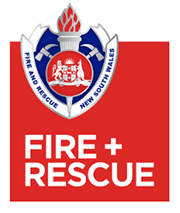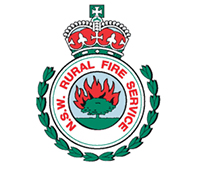Fire Safety
Safe Operating of Fire Extinguishers
[st_box title=”FACT” type=”info”]Poor maintenance and incorrect usage of fire extinguishers in the home are two key reasons small house fires can spread endangering lives and causing considerable damage to property. House fires can be brought under control within the first few minutes of ignition if attended to correctly with an extinguisher that is well maintained, which can buy valuable time before the Fire Brigade arrives.[/st_box]Portable fire extinguishers
There are a number of different types of portable fire extinguishers, each can be identified by the colour coding and labelling.
How to operate a fire extinguisher
There are four (4) basic steps for using modern portable fire extinguishers.
The acronym PASS is used to describe these four basic steps.
- Pull Pin:
Pull pin at the top of the extinguisher, breaking the seal. When in place, the pin keeps the handle from being pressed and accidentally operating the extinguisher. Immediately test the extinguisher. (Aiming away from the operator) This is to ensure the extinguisher works and also shows the operator how far the stream travels - Aim:
Approach the fire standing at a safe distance. Aim the nozzle or outlet towards the base of the fire. - Squeeze:
Squeeze the handles together to discharge the extinguishing agent inside. To stop discharge, release the handles. - Sweep:
Sweep the nozzle from side to side as you approach the fire, directing the extinguishing agent at the base of the flames. After an A Class fire is extinguished, probe for smouldering hot spots that could reignite the fuel.
Note:
- Always test the extinguisher before proceeding to the fire.
- Remember that you only have seconds to extinguish the fire, not minutes, but only do so if it is safe and you are trained to.
- The rule of thumb is if you can not put a fire out with one extinguisher then the fire is too big to fight
Operational safe working practices (If safe to do so)
- Remove the safety pin by pulling it sharply (this also breaks the plastic seal). Test to ensure that the extinguisher is operable immediately after removing from mounting bracket.
- Always try to work in pairs for safety.
- Carry or drag extinguisher to the scene of the fire.
- Hold the hose near the nozzle or hold any moulded handles.
- Squeeze the handles together to completely discharge the contents onto the seat of the fire.
- Operate extinguishers at their maximum effective distance.
- Never stand in an open doorway when attempting to extinguish a fire. This is usually the ventilation point for smoke, heat and steam, and could cause injury to the operator.
- Always back away from a fire
- Always lay the extinguisher down on its side when empty.
- Do not touch the metal components of the Carbon Dioxide extinguisher, due to the build up of “dry ice” as frostbite may occur.
- Avoid pointing Carbon Dioxide extinguisher applicators at people. If the extinguisher is accidentally operated, frostbite to the face and eyes may occur.
- After Carbon Dioxide extinguishers have been operated into a confined space, the level of oxygen will be reduced and suffocation may occur if the operator remains or the area is entered prematurely.
- AFFF (Foam) extinguishers must not be used on deep seated cooking oil/fat fires, due to the water’s conversion to steam, with a possible violent ejection of burning fuel from the container.
- Do not discharge water onto suspect electrical type fires. Water is an excellent conductor of electricity and you may be electrocuted.
- Do not discharge water onto flammable liquid fires, as flammable liquid floats on water and this may cause the fire to spread.
- When a wet chemical extinguisher has been discharged in a kitchen, all people should leave the area due to the wet chemical vapours causing Broncho Constriction”.
N.B. Ensure that an authorised fire servicing company provides ongoing inspections and maintenance on all fire fighting equipment.
After use requirements
- Lay the extinguisher down out of the way after use.
- Do not place empty extinguisher/s back on the hook.
- Replace with the same type of extinguisher (should a spare be available).
- Arrange empty extinguisher/s to be serviced / refilled as soon as possible.
- Report the use of the fire extinguisher to the Fire safety Officer or Supervisor.
- For information on recycling fire extinguishers see Fire Safety Factsheet # 40B.
Printable factsheet
Safe operating of fire extinguishers (PDF, 86Kb)
Fire & Rescue NSW Community Risk Management. Revised 27 March 2007.





